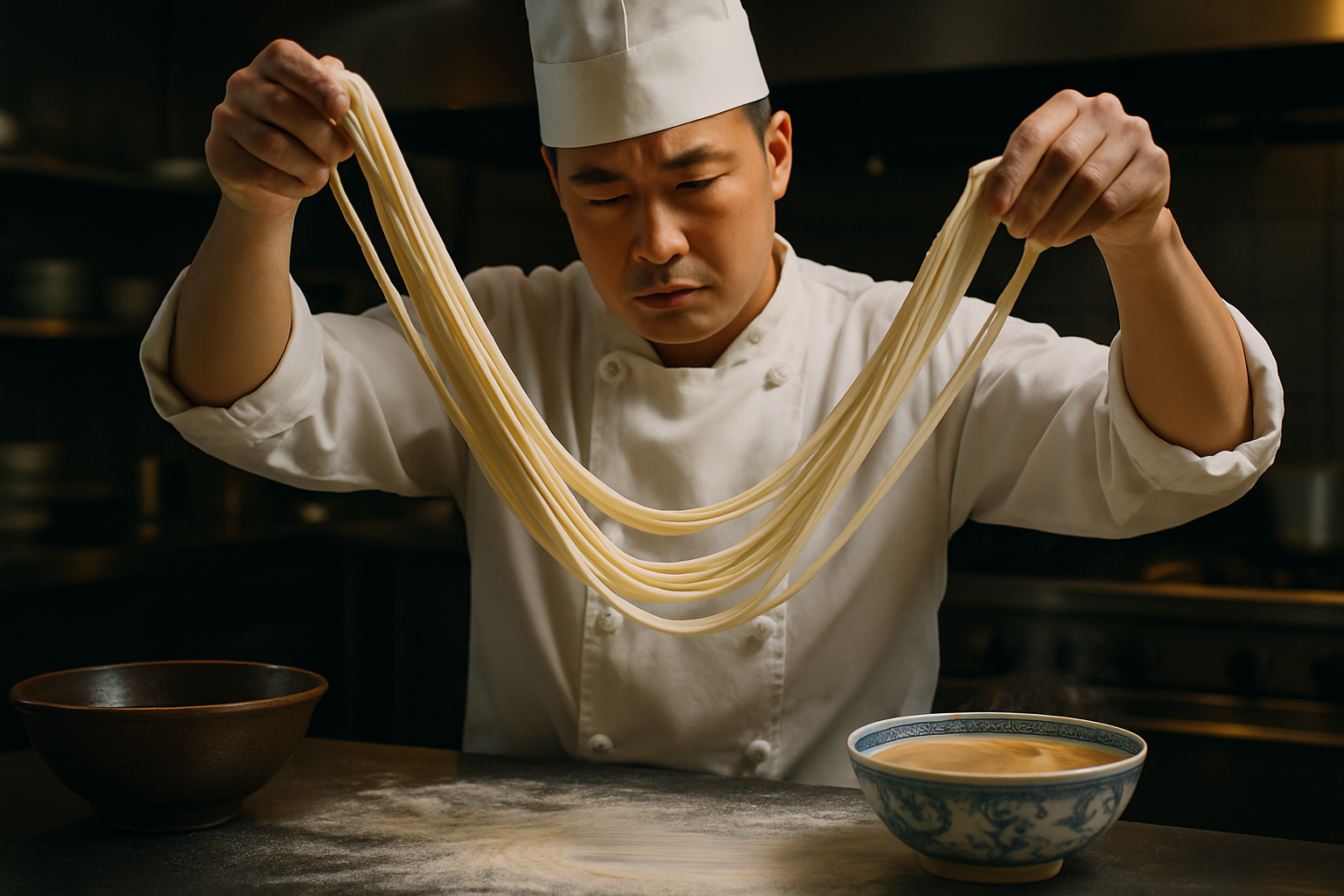Noodle Pulling: The Artistry Behind Hand-Pulled Lamian
Slurping up a bowl of hand-pulled noodles is like tasting a piece of culinary history. This ancient Chinese technique, known as lamian, transforms a simple ball of dough into strands of silky perfection through a mesmerizing dance of stretching and twirling. Join us as we dive into the world of noodle pulling, exploring its rich heritage, intricate techniques, and modern-day innovations.

From Street Food to Gourmet Kitchens
Hand-pulled noodles have come a long way from their humble origins as street food in northwestern China. Today, they’re celebrated in high-end restaurants and trendy noodle bars worldwide. Chefs are experimenting with lamian techniques, incorporating unexpected flavors like beet juice or squid ink into the dough for vibrant, colorful noodles. Some are pushing the boundaries further by creating fusion dishes that blend traditional Chinese flavors with global cuisines, resulting in innovative creations like lamian carbonara or hand-pulled noodle tacos. This evolution showcases the versatility of the technique and its ability to adapt to modern culinary trends.
The Science Behind the Stretch
Understanding the science behind noodle pulling can elevate your appreciation for this culinary art form. The key lies in the gluten network formed within the dough. As the noodle master stretches and folds the dough, the gluten proteins align and strengthen, creating long, elastic strands. The hydration level of the dough is crucial – too dry, and it won’t stretch; too wet, and it’ll tear. Temperature also plays a vital role, with the ideal range being between 25-30°C (77-86°F). This perfect balance of ingredients, temperature, and technique results in noodles with a unique ‘QQ’ texture – a term used to describe the ideal chewy, springy bite that hand-pulled noodles are known for.
Mastering the Art at Home
While achieving the skill level of a noodle master takes years of practice, home cooks can still try their hand at a simplified version of lamian. Start with a basic dough of high-gluten flour, salt, and water. After kneading and resting, begin the pulling process by stretching the dough into a loop and twisting it. Continue this motion, gradually increasing the number of strands. While your first attempts may not result in perfectly even noodles, the process is both fun and rewarding. Pair your homemade noodles with a rich broth and fresh toppings for a satisfying meal that connects you to centuries of culinary tradition.
The Future of Noodle Pulling
As with many traditional culinary arts, there’s concern about the future of hand-pulled noodles in an increasingly automated world. However, the unique texture and experience of lamian ensure its continued relevance. Culinary schools are now including noodle pulling in their curricula, recognizing its importance in preserving cultural heritage. Meanwhile, food tech companies are exploring ways to replicate the hand-pulled texture using machinery, aiming to make these noodles more accessible without losing their essence. The interplay between tradition and innovation promises an exciting future for this ancient art form.
Noodle Pulling Tips & Facts
• The dough for hand-pulled noodles typically rests for at least an hour before pulling
• Noodle masters can create up to 256 strands from a single piece of dough
• The technique is believed to have originated in the Lanzhou region of China
• Hand-pulled noodles cook much faster than machine-made varieties
• The world record for the longest hand-pulled noodle is over 3,000 meters
In conclusion, noodle pulling is more than just a cooking technique – it’s a testament to human creativity and skill. From its ancient origins to modern innovations, lamian continues to captivate food lovers worldwide. Whether you’re slurping up a bowl in a bustling Chinese market or attempting the art in your own kitchen, hand-pulled noodles offer a unique connection to culinary heritage and a delicious adventure for your taste buds. So next time you encounter these springy strands, take a moment to appreciate the artistry and tradition in every bite.





